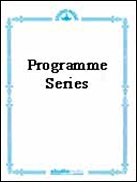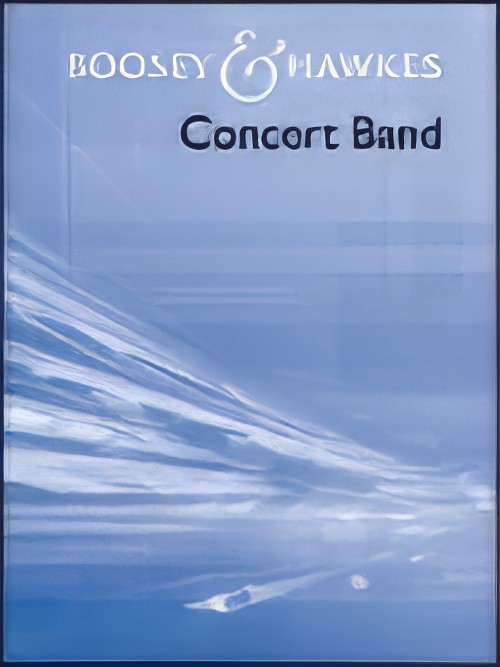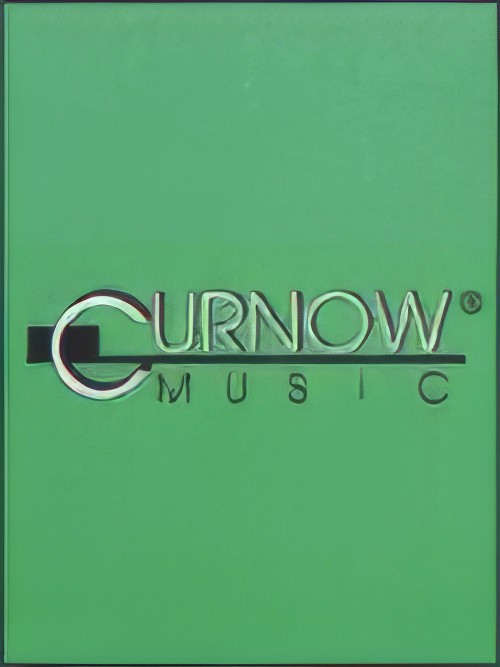Results
-
 £60.99
£60.99Circus Delight Wind Band Set (Score & Parts)
Circus Delight' is a five-part suite which is set, how could it be otherwise, in a big circus tent. The suite starts with a part called 'Entrance'. The orchestra, positioned above the entrance of the ring asks for the attention of the audience and then the ring announcer enters. The show can begin! The elephants play a central role in the first act. These colossal grey animals are rather slow and perform their tricks in a moderate tempo. ('Elephant Blues') How different are 'The Acrobats'. At high speed they run, jump and fly through the ring, until ....... It gets very exciting. Fortunately, all's well that ends well and they take their leave of the audience at a trot. Everyone knows, and yet it is mostly not spoken about, that when a clown has taken off his red nose and rubbed off his make-up, his face off-stage is not always a happy one. ('Tears of the Clown') The piece ends on a cheerful note with 'The Parade', in which all the artists make their entrance in the ring once again to gratefully acknowledge the audience's overwhelming applause. 03:45
Estimated dispatch 7-14 working days
-
 £149.99
£149.99Columbus Wind Band Set (Score & Parts)
Christopher Columbus was born in Genoa in 1451. His father was a wool merchant. Originally he seemed destined to follow in his father's footsteps, and thus sailed the oceans to countries as far apart as Iceland and Guinea. In 1476 his ship was sunk during a battle off the coast of Portugal. Columbus saved his own life by swimming to shore. In 1484 he conceived the idea of sailing to the Indies via a westward sea route, but it was only in 1492 that he was able to realize this plan. On this first voyage he was in command of three ships: the flag-ship, called the Santa Maria, the Pinta, and the Ni?a. From Spain Columbus sailed via the Canary Islands to the Bahamas, which he sighted on October 12th 1492. Without being aware of it Columbus discovered the 'New World' - he thought he had landed in the eastern part of Asia. The motif from Dvo??k's 9th Symphony 'Aus der neuen Welt' forms a little counterfeit history at this point in the composition. After this first voyage Columbus was to undertake another three long voyages to America. These voyages were certainly not entirely devoid of misfortune. More than once he was faced with shipwreck, mutiny and the destruction of settlements he had founded. After Columbus had left for Spain from Rio Belen in 1503, he beached his ships on the coast of Jamaica. The crew were marooned there and it was only after a year that Columbus succeeded in saving his men and sailing back to Spain with them. In the music the misunderstanding about which continent Columbus discovered in his lifetime resounds, for does this part in the composition not contain Asiatic motifs? Poor Columbus! In 1506 the famous explorer died in Valladolid. 09:00
Estimated dispatch 7-14 working days
-
 £84.99
£84.99Durkle Bandrydge Suite Wind Band Set (Score & Parts) - Fraser, Bruce
Durkle Bandrydge is the name of the composers imaginary world, but it could very well be anyones invisible dream world with a different name. In this very versatile suite by Bruce Fraser, 8 characters are featured, each with its own peculiarities, making Durkle Bandrydge such a colourful place. Do these characters differ that much from us? That is for you to find out! In the last part, all characters come together in a special way.Durkle Bandrydge exists at the end of your street. It is invisible to humans, but Durkle Bandrygators can watch us with great interest. The music will introduce you to some of the characters who live in this unusual place. The parts: Somnanbulyss, who is a giant troll guarding the entrance to Durkle Bandryde. At least, he is supposed to, but he tends to sleep most of the time. His music is therefore very slow moving and sleepy. Long Gwysteen is a tall, mysterious, and somehow sophisticated character, who walls around with a shell on his back. His music glides along rather gracefully. Squelfitch is a rather unpleasant and smelly character who lives in a bog, which is why his music sounds rather slimy and a bit like trying to walk through quicksand. Perfydlia is a meddling old woman, who gossips about everybody and squeals with sudden delight at the small exciting bits of tittletattle about others in the village. In the music you can hear her sudden little squeals of delight. Maryann Lovely is a beautiful young lady, graceful, gorgeous, absolutely devine, and her music is obviously just the same. Thistledoo Nicely is a lively character who spends and spends and spends with her credit card, buying the latest fashion and never worries about having to pay the bills. Her music reflects her excitement when shopping and het 'happy go lucky' approach to life. Marsyn Edginton is the Lord of the manor, the richest man in town, the 'big cheese', the man with all the power and, of course, the biggest house. He is very grand and his music like he could be a king. Jimmy McScotsmyn is a red haired scotsman wearing tartan cap. He misses his home country terribly and eats lots of shortbread, oatcakes, scotch eggs, porridge and drinks an enormous amount of Scotch Wisky, which helps him to have fond memories of the kind of music he would like to dance to when he was a younger man. His favourite dance is a Jig and this is the music he remembers. Grand March of the Durkle Bandrydgators. We hope that you have enjoyed meeting these characters from Drukle Bandrydge and would invite you to listen to all the villagers now march along in a grand parade - it is a pity that you can not see them, what is a wonderful sight. If you listen carefully, you will hear the melodies which belong to the characters as they march past. Oh what a grand spectacle! 10:00
Estimated dispatch 7-14 working days
-
 £69.30
£69.30From Heartland to Heaven
Commissioned to honor a beloved teacher who had passed away, this eloquent piece both begins and ends with warm and moving chorale sections. The contrasting allegro con brio theme is full of energy and vitality. While this piece is not very difficult, it features close contemporary harmonies and it provides ample opportunities for expressive playing especially in the woodwinds. Includes lots of tasteful percussion parts to keep your drummers involved. A wonderful composition that will pay big musical dividends and it is a wonderful choice for contest or concert performances. VERY VERY NICE!
Estimated dispatch 7-14 working days
-
 £59.95
£59.95HEAVIER WATER (Programme Concert Band) - Handel, George Frideric - Wiffin, Rob
In the mid-1970's, the Band of the Coldstream Guards made it into the pop charts with a rock version of Handel's Water Music entitles Heavy Water. The concept has been reworked and the result is this funk version, Heavier Water. Although the piece features the bass guitar, it works perfectly well without it. Duration: 4:00
Estimated dispatch 7-14 working days
-
 £112.95
£112.95IRISH RHAPSODY (Concert Band) - Grundman, Clare
First published in 1971, An Irish Rhapsody has become a staple in the literature for young concert bands. It demonstrates Clare Grundman's mastery of orchestration and exceptional treatment of transitions and pacing. Including the folk melodies The Morren (Minstrel Boy), I Know Where I'm Going, ShepherD's Lamb Reel, Cockles and Mussels, The Rakes of Mallow and Kathleen O'More, it is just as fresh-sounding and effective today as it was more than 30 years ago! (Grade 3) (6:45)
Estimated dispatch 7-14 working days
-
 £69.99
£69.99JUMPIN' AT THE SWING TRAIN (Concert Band) - Bulla, Stephen
Authentic Big Band swing style music for the concert band! You know this one will be a crowd pleaser, and SO much fun to play! Stephen Bulla works his magic with the great Jazz sounds of the 40s and 50s in such a way that your band will be able to put it together and make it happen. Lots of great jazz style articulation and harmonic considerations ensure that your students are doing more than just playing the piece. They are learning Big Band Jazz style interpretation in the bargain, and loving it as they do. This is a great opportunity to study the historical American roots of Jazz! Duration: 2:21 American Grade 3
Estimated dispatch 7-14 working days
-
 £118.99
£118.99Kaiser-Walzer Wind Band Set (Score & Parts)
Everybody loves a Strauss waltz and they can beguaranteed to put a smile on the face of the audienceduring a concert. This waltz was composed in1888 by Johann Strauss, Jr. and many peopleconsider it to be his best composition - evenrivalling The Blue Danube.The Kaiser-Walzer has a quiet, rather melancholicopening, entirely in character with the personalityof the calm and dignified monarch Franz-Josef towhom it was dedicated. It is full of playful motifsand refined surprises and the lilting melody is sureto make everyone want to get up and dance. 0:13:20
Estimated dispatch 7-14 working days
-
 £79.20
£79.20Kentucky Sunrise
A great new edition of Karl L. King's classic circus piece with a happy ragtime beat. Originally written to accompany a "trick horse" act with the Barnum & Bailey's Circus, the tune soon became so popular that it was used for a wide variety of acts including clown "walk-a-bouts". Bob Foster's arrangement retains all of the color and excitement of the original while making it playable with the modern concert band instrumentation. It's not easy, but it sure is fun!
Estimated dispatch 7-14 working days
-
 £37.62
£37.62Knock Before You Rock (Concert Band - Score and Parts)
Your young band will love this one! Take a rock beat, mix it with energetic melodic lines, shake it up with a little creative flair, and there you have it.a classic rock tune which will "knock their socks off." But, beware of the pitfalls.your young students will want to play this one at EVERY rehearsal. It's a great young band concert closer! DON'T MISS THIS ONE!
Estimated dispatch 7-14 working days
